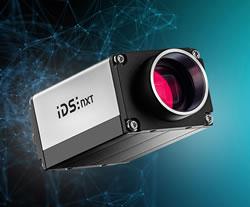Flexxbotics Publishes New White Paper on Autonomous Process Control (APC) using Robotics and Automated Inspection in Manufacturing
The paper also explains how improved nonconformance capture can reduce defects by over 30%, increase production yields between 25-45% depending on the nature of the process, and reduce the Cost of Quality by 20% or more leading to significant EBITDA improvements.
Boston, MA - October 16, 2024 - Flexxbotics, delivering digital solutions for robot-driven manufacturing at scale, today announced the publication of a new white paper titled Autonomous Process Control (APC) using Robots and Automated Inspection in Manufacturing. The paper identifies the methodology and related technologies required for APC in the context of smart factory production robotics, a pivotal technology for achieving autonomous manufacturing. The paper also explains how improved nonconformance capture can reduce defects by over 30%, increase production yields between 25-45% depending on the nature of the process, and reduce the Cost of Quality by 20% or more leading to significant EBITDA improvements.
APC white paper download https://flexxboticsinc.com/1apcpr
Over past decades, manufacturing has evolved significantly with advancements in production automation. The conventional factory automation approach is reliant on highly skilled engineers and operator involvement to maintain process capability and consistency. Today, factory automation is being transformed by robotics and standardized digital solutions designed for increasing levels of autonomy in order to address the cost pressures associated with reshoring, supply chain restructuring, and labor shortages.
Achieving consistent quality and yields is a key challenge in automation-intensive industries like automotive, electronics, and consumer goods as well as sectors with significant regulatory compliance requirements such as aerospace, defense, and life sciences. Numerous factors introduce variability into factory processes which lead to inconsistencies in product quality and reduced production efficiency. The need for scalable, repeatable processes is more pressing than ever as manufacturing environments include increasing levels of automation complexity. Utilizing production robotics with autonomy both mitigates variability and also enables higher levels of precision and consistency for greater profitability.
Autonomous Process Control is essential for enabling Industry 4.0 "lights out" manufacturing where operations continue indefinitely without human involvement. As automation levels increase in smart factories, the ability to produce high-quality products with autonomy becomes critical. Without consistent APC autonomous production is not feasible. Process control autonomy is the critical condition that must be achieved to attain autonomous manufacturing.
"We believe that autonomous process control is the fundamental prerequisite to achieving autonomous manufacturing," said Tyler Modelski, CTO & Co-founder of Flexxbotics. "For true autonomy robots must understand each part's tolerance control limits and be able to make real-time corrections to factory machining operations based on automated inspection results without human intervention."
White Paper topics include:
• What is Autonomous Process Control?
• Key Technology Components for APC
• Why is APC Important?
• APC Implementation Steps
• APC Deployment Guidelines
o Requirements for Success
o Best Practices
o Common Pitfalls
• Benefits & Advantages of APC
• Future Directions
Flexxbotics enables robot-driven manufacturing at scale. Flexxbotics solution digitalizes robotic production with Autonomous Process Control for next generation smart factory environments. Flexxbotics breakthrough, the unique FlexxCORE™ technology, seamlessly connects and coordinates robots with existing automation equipment, IT systems and people.
"Adopting Autonomous Process Control enables significant improvements in product quality, production yields, and corporate profitability providing a clear return on investment," said Tyler Bouchard, CEO & Co-founder of Flexxbotics. "We've written this paper specifically for executives in operations and quality, as well as, personnel at all levels seeking to understand and implement APC in their factories worldwide."
Autonomous Process Control (APC) using Robots and Automated Inspection in Manufacturing white paper download https://flexxboticsinc.com/1apcpr
About Flexxbotics
Flexxbotics enables robot-driven manufacturing at scale. Flexxbotics solution digitalizes robotic production with autonomous process control for next generation smart factory environments. Flexxbotics breakthrough, the unique FlexxCORE™ technology, seamlessly connects and coordinates robots with existing automation equipment, IT systems and people. More powerful, flexible and open, Flexxbotics revolutionizes the use of robotics in complex production. Visit www.flexxbotics.com to learn more and follow us on LinkedIn.
Featured Product

